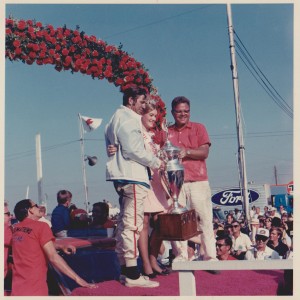 A fter winning hundreds of races on short tracks across the South in the early 1960s, Donnie finally got his shot at the highest level when he ran his first two races on what was then known as the NASCAR Grand National circuit. Over the next 21 years he went on to race 242 times in his Grand National/Winston Cup career, posting 10 wins, 17 poles, 79 top 5 finishes and an incredible 115 top 10 finishes. That meant that when Donnie took the green flag, 33 percent of the time he finished in the top 5 and 48 percent of the time he finished in the top 10.
A fter winning hundreds of races on short tracks across the South in the early 1960s, Donnie finally got his shot at the highest level when he ran his first two races on what was then known as the NASCAR Grand National circuit. Over the next 21 years he went on to race 242 times in his Grand National/Winston Cup career, posting 10 wins, 17 poles, 79 top 5 finishes and an incredible 115 top 10 finishes. That meant that when Donnie took the green flag, 33 percent of the time he finished in the top 5 and 48 percent of the time he finished in the top 10.

Poles
Wins
Top 5s
Top 10s
Laps Led
Best Finish


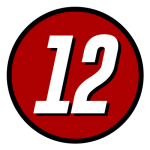
D onnie really got it cranking in his first full season on the Grand National circuit, running 20 races and earning NASCAR Rookie of the Year honors in the process. He didn’t get a win, but led the first laps of his career in the Asheville 300 at the Asheville Speedway on June 2, 1967 and posted his highest finish of the year when he came home second. He posted three other top 5 finishes that year and also led his first lap on a major speedway at Darlington Raceway on Sept. 4, 1967.
Poles
Wins
Top 5s
Top 10s
Laps Led
Best Finish


 D onnie only ran 13 races but it certainly wasn’t an unlucky season as he began a long association with successful car owner/crew chief Banjo Matthews which led to the first pole and first victory of his career. The first pole came at Charlotte Motor Speedway when he posted a lap of 159.223 mph to lead the field for the World 600 on May 2, 1968, a race in which he finished second. He finally found Victory Lane in the Carolina 500 at North Carolina Motor Speedway on June 16, 1968. He opened the season driving the No. 66 car for Holman-Moody in the Daytona 500 but after that stepped into Matthew’s No. 27 Ford and drove it for three full seasons, including two of the most successful of his career.
D onnie only ran 13 races but it certainly wasn’t an unlucky season as he began a long association with successful car owner/crew chief Banjo Matthews which led to the first pole and first victory of his career. The first pole came at Charlotte Motor Speedway when he posted a lap of 159.223 mph to lead the field for the World 600 on May 2, 1968, a race in which he finished second. He finally found Victory Lane in the Carolina 500 at North Carolina Motor Speedway on June 16, 1968. He opened the season driving the No. 66 car for Holman-Moody in the Daytona 500 but after that stepped into Matthew’s No. 27 Ford and drove it for three full seasons, including two of the most successful of his career.
Poles
Wins
Top 5s
Top 10s
Laps Led
Best Finish

Neil Armstrong and the Apollo astronauts weren’t the only ones who made a meteoric raise that year as the Allison-Matthews connection blasted off on the NASCAR scene as well. Despite running just 16 races on the year, Donnie sat on the pole twice and claimed his second career victory in the National 500 at Charlotte Motor Speedway on Oct. 12, 1969. In the 16 races he ran, Donnie finished top 5 in 10 of them and added one more top 10 finish for a total of 11. Equally amazing, however, is that he started 14 of the 16 races from a top 10 starting position and eight of the 16 from a top 5 spot. His poles came at Charlotte for the World 600 on May 25, 1969 and at Michigan International Speedway for the Motor State 500 on June 15, 1969.
Poles
Wins
Top 5s
Top 10s
Laps Led
Best Finish


 Amazingly Donnie and Banjo Matthews improved on their 1969 numbers with Donnie capturing three wins, all at tracks and in events synonymous with NASCAR itself, while also taking a successful side venture into the world of Indy car racing. Donnie and Banjo’s winning ways started on April 5, 1970, when Donnie started second and went on to win the Southeastern 500 at historic Bristol International Raceway. He followed that with a win in the grueling World 600 at Charlotte on May 24, 1970. He then hit the trifecta with a win in the Firecracker 400 on July 4, 1970 at Daytona International Speedway — his only career win on the raceway. What he did for car owner and friend A.J. Foyt in the 1970 Indianapolis 500 was equally amazing. Out to prove that he wasn’t just a “taxi driver” as Foyt often referred to NASCAR’s finest, Donnie set out to qualify for the magical race at the Brickyard and left holding a piece of the track’s history. Not only did he qualify and complete the race, but he came home fourth, which made him the highest-finishing rookie in Indy 500 history at the time. It was a record that stood for 23 years until Nigell Mansell finished third in the 1993 Indy 500.
Amazingly Donnie and Banjo Matthews improved on their 1969 numbers with Donnie capturing three wins, all at tracks and in events synonymous with NASCAR itself, while also taking a successful side venture into the world of Indy car racing. Donnie and Banjo’s winning ways started on April 5, 1970, when Donnie started second and went on to win the Southeastern 500 at historic Bristol International Raceway. He followed that with a win in the grueling World 600 at Charlotte on May 24, 1970. He then hit the trifecta with a win in the Firecracker 400 on July 4, 1970 at Daytona International Speedway — his only career win on the raceway. What he did for car owner and friend A.J. Foyt in the 1970 Indianapolis 500 was equally amazing. Out to prove that he wasn’t just a “taxi driver” as Foyt often referred to NASCAR’s finest, Donnie set out to qualify for the magical race at the Brickyard and left holding a piece of the track’s history. Not only did he qualify and complete the race, but he came home fourth, which made him the highest-finishing rookie in Indy 500 history at the time. It was a record that stood for 23 years until Nigell Mansell finished third in the 1993 Indy 500.
Poles
Wins
Top 5s
Top 10s
Laps Led
Best Finish

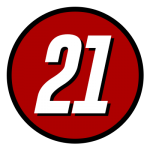
 Donnie’s success continued though not with Banjo Matthews. After driving the No. 27 car in the Daytona 500, Donnie moved on to a short but sweet stint in the Wood Brothers No. 21 Mercury. He only ran 11 races in the No. 21, but it was a stretch as good as any other driver recorded in that famous ride. He sat on the pole for the first three races with the Wood Brothers and won the third, taking the checkers at the 2.66-mile Alabama International Motor Speedway — his home track — in the Winston 500 on May 16, 1971. He won two more poles on the season, at Daytona for the Firecracker 400 on July 4 and again for the Talladega 500 in August, and started 10 of the 11 races in the top 6. He also finished eight of the 11 races in the top 6.
Donnie’s success continued though not with Banjo Matthews. After driving the No. 27 car in the Daytona 500, Donnie moved on to a short but sweet stint in the Wood Brothers No. 21 Mercury. He only ran 11 races in the No. 21, but it was a stretch as good as any other driver recorded in that famous ride. He sat on the pole for the first three races with the Wood Brothers and won the third, taking the checkers at the 2.66-mile Alabama International Motor Speedway — his home track — in the Winston 500 on May 16, 1971. He won two more poles on the season, at Daytona for the Firecracker 400 on July 4 and again for the Talladega 500 in August, and started 10 of the 11 races in the top 6. He also finished eight of the 11 races in the top 6.
Poles
Wins
Top 5s
Top 10s
Laps Led
Best Finish




In great part because he bounced around between four teams, the 1972 season was a step back for Donnie. He drove the first two races of the year in the No. 27 for Monty Myers, drove a total of six races in Bud Moore’s No. 15 Ford and drove one race each for Roger Penske and Crawford Racing. His best starting position for any race was 6th (four times) and his highest finish on the year was a 3rd.
Poles
Wins
Top 5s
Top 10s
Laps Led
Best Finish
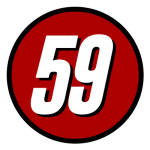

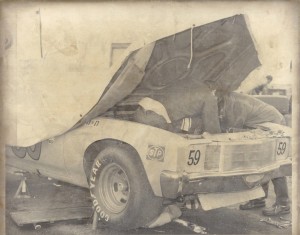 This season saw Donnie enter into an alliance that would prove extremely unsatisfying down the road when he went in with two business partners to form DiGard Racing. After driving the first three races of the year in the No. 59 car, he moved into the No. 88 car that would be his steady ride for most of three seasons. He also started on a 45-race stretch that would be marked by plenty of success starting races and not nearly as much success finishing them. In that stretch he started from a top 10 spot 38 times and had 27 DNFs, including 10 in 1973. The highlight of the year was when he started on the pole and finished 2nd in the Winston 500 at the Alabama International Motor Speedway on May 6, 1973. Otherwise it was pretty bleak with only five top 10s and finishes that included a 32nd, a 34th and a 38th.
This season saw Donnie enter into an alliance that would prove extremely unsatisfying down the road when he went in with two business partners to form DiGard Racing. After driving the first three races of the year in the No. 59 car, he moved into the No. 88 car that would be his steady ride for most of three seasons. He also started on a 45-race stretch that would be marked by plenty of success starting races and not nearly as much success finishing them. In that stretch he started from a top 10 spot 38 times and had 27 DNFs, including 10 in 1973. The highlight of the year was when he started on the pole and finished 2nd in the Winston 500 at the Alabama International Motor Speedway on May 6, 1973. Otherwise it was pretty bleak with only five top 10s and finishes that included a 32nd, a 34th and a 38th.
Poles
Wins
Top 5s
Top 10s
Laps Led
Best Finish

 Things rebounded slightly after the disappointing 1973 season, though the team still had 11 DNFs, tied for second-most in Donnie’s career. It did record poles at Bristol for the March 17, 1974 Southeastern 500 and at Darlington for the April 7, 1974 Rebel 500 but no wins. In all, the DiGard team started in the top 10 in 18 of 21 races, but could only finish in the top 10 in 10 of those races. The highlight of the season was starting 5th and finishing 2nd in the Music City USA 400 at the Nashville Speedway on May 12, 1974, but the year also included a 40th-place finish in the Talladega 500 on Aug. 11, 1974, after the engine failed on lap 38 of the 188-lap event. It was one of only five finishes of 40th or worst in Donnie’s 242 career races.
Things rebounded slightly after the disappointing 1973 season, though the team still had 11 DNFs, tied for second-most in Donnie’s career. It did record poles at Bristol for the March 17, 1974 Southeastern 500 and at Darlington for the April 7, 1974 Rebel 500 but no wins. In all, the DiGard team started in the top 10 in 18 of 21 races, but could only finish in the top 10 in 10 of those races. The highlight of the season was starting 5th and finishing 2nd in the Music City USA 400 at the Nashville Speedway on May 12, 1974, but the year also included a 40th-place finish in the Talladega 500 on Aug. 11, 1974, after the engine failed on lap 38 of the 188-lap event. It was one of only five finishes of 40th or worst in Donnie’s 242 career races.
Poles
Wins
Top 5s
Top 10s
Laps Led
Best Finish



Donnie started the year with DiGard Racing but didn’t finish it, ironically being forced out of the No. 88 car after starting on the pole and finishing 5th in the Firecracker 400 at Daytona on July 4, 1975. Standing on the back of a yacht in the Daytona Beach Marina, Donnie was told by partner Bill Gardner that he could no longer drive and the team was going in a different direction which proved to be putting Darrell Waltrip in the car. Fortunately, Gardner was wrong and Donnie went on to have some of his finest moments in racing after that conversation, but it was not a racing season he recalls fondly. On the track, he swept the poles for both Daytona races, started 2nd in three others and 7th in three others before being let go but could manage just a 3rd at Darlington on April 13, 1975, as his best showing at the checkers. He also finished a disappointing 42nd in the Winston 500 at Alabama International Motor Speedway on May 4, 1975 after starting on the outside pole but having his engine fail on lap 11. The season wasn’t a total loss, however, because two of his last four races of the year came in the No. 28 car of Hoss Ellington and the two would prove to be a formidable team starting the next year.
Poles
Wins
Top 5s
Top 10s
Laps Led
Best Finish


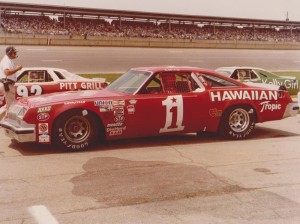 The Bicentennial year was a good one for the country and Donnie and Hoss as they ran nine races and DA found his way back to Victory Lane. Donnie started in the top 10 in eight of the nine races and recorded his first win in five seasons by taking the National 500 at Charlotte Motor Speedway on Oct. 10, 1976. That win was his first in the No. 1 Hoss Ellington Hawaiian Tropic Chevy he would become so synonymous with in the coming years.
The Bicentennial year was a good one for the country and Donnie and Hoss as they ran nine races and DA found his way back to Victory Lane. Donnie started in the top 10 in eight of the nine races and recorded his first win in five seasons by taking the National 500 at Charlotte Motor Speedway on Oct. 10, 1976. That win was his first in the No. 1 Hoss Ellington Hawaiian Tropic Chevy he would become so synonymous with in the coming years.
Poles
Wins
Top 5s
Top 10s
Laps Led
Best Finish

 Donnie was a hard charger in 1977, leading a career high 1,163 laps and recording perhaps the best overall season of his career. One of the most amazing stats was that he ran 17 races that year and he started all 17 from somewhere within the top 8. He put the No. 1 Chevy on the pole for the Daytona 500 but got caught up in a crash and finished 30th. He sat on the pole his next race out at Rockingham and again at the same track later in the season. He started from the outside pole and went on to win the Talladega 500 on Aug. 7, 1977, and he won the American 500 from the pole at North Carolina Speedway on Oct. 23, 1977.
Donnie was a hard charger in 1977, leading a career high 1,163 laps and recording perhaps the best overall season of his career. One of the most amazing stats was that he ran 17 races that year and he started all 17 from somewhere within the top 8. He put the No. 1 Chevy on the pole for the Daytona 500 but got caught up in a crash and finished 30th. He sat on the pole his next race out at Rockingham and again at the same track later in the season. He started from the outside pole and went on to win the Talladega 500 on Aug. 7, 1977, and he won the American 500 from the pole at North Carolina Speedway on Oct. 23, 1977.
Poles
Wins
Top 5s
Top 10s
Laps Led
Best Finish

 Despite a huge drop in number of laps led, Donnie’s final results were otherwise almost as good as they had been in 1977. He didn’t win any poles, but he made his final trip to Victory Lane in his career and it was a memorable one. Down three laps to Dave Marcis and Richard Petty in the Dixie 500 at Atlanta Motor Speedway on Nov. 5, 1978, Donnie made up those laps, passed Petty on the last lap and set off one of the biggest scoring controversy in NASCAR history in the process. Petty was initially awarded the victory to break a 42-race winless streak, but after hours of recounts (and plenty of threats) it was determined that Donnie was indeed the winner. Things hadn’t been that hot in Atlanta since Gen. Sherman marched through town as the race was notable not only for the fireworks that came at the finish but for a huge fire in the parking lot that had been set off by someone’s catalytic converter. That blaze forced a caution early in the race so the track fire crews could go fight it and certainly helped burn that race and the entire 1978 season into Donnie’s memory banks.
Despite a huge drop in number of laps led, Donnie’s final results were otherwise almost as good as they had been in 1977. He didn’t win any poles, but he made his final trip to Victory Lane in his career and it was a memorable one. Down three laps to Dave Marcis and Richard Petty in the Dixie 500 at Atlanta Motor Speedway on Nov. 5, 1978, Donnie made up those laps, passed Petty on the last lap and set off one of the biggest scoring controversy in NASCAR history in the process. Petty was initially awarded the victory to break a 42-race winless streak, but after hours of recounts (and plenty of threats) it was determined that Donnie was indeed the winner. Things hadn’t been that hot in Atlanta since Gen. Sherman marched through town as the race was notable not only for the fireworks that came at the finish but for a huge fire in the parking lot that had been set off by someone’s catalytic converter. That blaze forced a caution early in the race so the track fire crews could go fight it and certainly helped burn that race and the entire 1978 season into Donnie’s memory banks.
Poles
Wins
Top 5s
Top 10s
Laps Led
Best Finish

 Quite simply, this is the season NASCAR fans remember Donnie for most in great part because of the way it started. CBS had decided to make the 1979 Daytona 500 the first NASCAR race ever broadcast live from flag to flag and what a curious public — particularly many viewers snowed in by a massive storm all the way up the eastern seaboard — saw was merely the best, most memorable finish in stock car racing history. Donnie dueled with Cale Yarborough throughout the race and when the two came off Turn 2 on the final lap, the melee was on. When all the beating and banging down the Daytona International Speedway was done, the two had crashed in Turn 3, Richard Petty had gone on to win the sixth of his seven Daytona 500s, and Cale was soon “beating on Bobby’s fist with his nose” as Donnie likes to describe it. Oh yeah, and the enthralled viewers at home were hooked on a sport they’d never seen before but that they now loved for all the fast-paced action and man-to-man interaction they’d seen after the wild finish. Donnie was credited with a 4th-place finish after starting on the outside pole and to this day it is still the most famous 4th-place run in NASCAR history. Donnie went on to win a pole and post seven top 5s and 10 top 10s in the No. 1 Hawaiian Tropic Chevy, but no race that season was more memorable than that first one.
Quite simply, this is the season NASCAR fans remember Donnie for most in great part because of the way it started. CBS had decided to make the 1979 Daytona 500 the first NASCAR race ever broadcast live from flag to flag and what a curious public — particularly many viewers snowed in by a massive storm all the way up the eastern seaboard — saw was merely the best, most memorable finish in stock car racing history. Donnie dueled with Cale Yarborough throughout the race and when the two came off Turn 2 on the final lap, the melee was on. When all the beating and banging down the Daytona International Speedway was done, the two had crashed in Turn 3, Richard Petty had gone on to win the sixth of his seven Daytona 500s, and Cale was soon “beating on Bobby’s fist with his nose” as Donnie likes to describe it. Oh yeah, and the enthralled viewers at home were hooked on a sport they’d never seen before but that they now loved for all the fast-paced action and man-to-man interaction they’d seen after the wild finish. Donnie was credited with a 4th-place finish after starting on the outside pole and to this day it is still the most famous 4th-place run in NASCAR history. Donnie went on to win a pole and post seven top 5s and 10 top 10s in the No. 1 Hawaiian Tropic Chevy, but no race that season was more memorable than that first one.
Poles
Wins
Top 5s
Top 10s
Laps Led
Best Finish



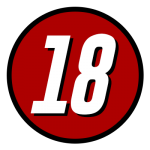
 This season saw the dissolving of the Allison-Ellington pairing after the fifth race in Atlanta, one in which Donnie started 4th but finished 26th in the Atlanta 500 on March 16, 1980. After that, Donnie drove a race for Joel Halpern and a race for Jack Ogden before settling in to finish the season in the No. 12 of Kennie Childers. It was a rough go, with a pole at Rockingham for the Oct 19, 1980 American 500 pretty much being the highlight of the season. Donnie did have three top 5s and six top 10s but he also had 11 DNFs in 18 races.
This season saw the dissolving of the Allison-Ellington pairing after the fifth race in Atlanta, one in which Donnie started 4th but finished 26th in the Atlanta 500 on March 16, 1980. After that, Donnie drove a race for Joel Halpern and a race for Jack Ogden before settling in to finish the season in the No. 12 of Kennie Childers. It was a rough go, with a pole at Rockingham for the Oct 19, 1980 American 500 pretty much being the highlight of the season. Donnie did have three top 5s and six top 10s but he also had 11 DNFs in 18 races.
Poles
Wins
Top 5s
Top 10s
Laps Led
Best Finish


 Donnie was limited to just six races years as a result of a terrible crash at Charlotte Motor Speedway in the World 600 on May 24, 1981, that left him with a broken leg, five broken ribs, a cracked shoulder blade, a cracked cheekbone, a collapsed lung and a concussion and robbed him of the rest of his season. Driving the No. 77 Oldsmobile that even Donnie admits was not up to the usual standards of the equipment he had been accustomed to in the past, he hit the wall then collided with Dick Brooks. From that point, it was just months of recovery, rehab, and sheer grit and determination to work hard and get back in a race car. Miraculously Donnie had recovered enough to climb up on the flag stand to serve as the official starter for the Talladega 500 on Aug. 2, 1981, and he was ready to go racing for the 1982 Daytona 500. But after that terrible wreck in Charlotte he would run just 13 more races in his NASCAR Winston Cup career.
Donnie was limited to just six races years as a result of a terrible crash at Charlotte Motor Speedway in the World 600 on May 24, 1981, that left him with a broken leg, five broken ribs, a cracked shoulder blade, a cracked cheekbone, a collapsed lung and a concussion and robbed him of the rest of his season. Driving the No. 77 Oldsmobile that even Donnie admits was not up to the usual standards of the equipment he had been accustomed to in the past, he hit the wall then collided with Dick Brooks. From that point, it was just months of recovery, rehab, and sheer grit and determination to work hard and get back in a race car. Miraculously Donnie had recovered enough to climb up on the flag stand to serve as the official starter for the Talladega 500 on Aug. 2, 1981, and he was ready to go racing for the 1982 Daytona 500. But after that terrible wreck in Charlotte he would run just 13 more races in his NASCAR Winston Cup career.
Poles
Wins
Top 5s
Top 10s
Laps Led
Best Finish



Donnie returned to run nine races in his final full-fledged Winston Cup effort, including one final ride with Hoss Ellington in the No. 1 UNO Oldsmobile in the season finale at Atlanta on Nov. 7, 1982. The highlight of the season had to be a run from a 17th starting spot to a 6th-place finish in the Winston 500 on May 2, 1982. It was his last race on his home track, the Alabama International Motor Speedway, and it was his best finish of the year.
Poles
Wins
Top 5s
Top 10s
Laps Led
Best Finish



Donnie ran four races spread out over the next six years, including two in the No. 88 car of Cliff Stewart in 1983, one in the 54 car of Henley Gray at Darlington in 1986 and his career finale at Michigan International Speedway on Aug. 21, 1988. He completed 114 of 200 laps in the No. 31 Slender You Figure Salons Oldsmobile of Bob Clark that day before the engine failed and he hung up his helmet for the final time on the Winston Cup circuit. The Allison legacy lived on that day, however, as his nephew Davey Allison won the race.


